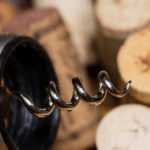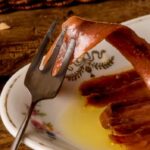
Canned White Tuna: more than one hundred years of history
September is the month for canning the Basque Cantabrian White Tuna, as the fishing season ends in August. Therefore, it is a month in which a lot of work has to be done to ensure that this product reaches the end customer with its maximum quality.
The first step in the canning of these tunas begins when the fish arrives at the fish markets after being caught. It is a traditional work in which each white tuna is fished one by one, in a sustainable way and, moreover, it helps to have a higher quality meat.
Once we have the fish, we start by cutting the head and the belly (since it is canned separately). And, the next step is the cooking of the white tuna. Sometimes it is sliced and sometimes whole without the head and put in water with salt.
After this step, it is left to cool down until it can be blunt/canned. However, before introducing it into the containers that will keep it for a long time, the skin, bones and ugly or inedible parts must be removed.
Next, the containers are filled with olive oil and some other seasoning, which depends on each cannery. The cans and jars are then closed.
Once we have the White Tuna in the jars or cans, they are placed in hot water tanks for sterilization. In this way, we already have the canned tuna ready, but we will have to wait for it to be consumed.
It should be left in dry places without contact with outside light for a few months so that the white tuna obtains its optimum point before consumption.
And that is how we have been preserving Basque Cantabrian White Tuna for hundreds of years. Preserving its original recipe and consequent products of maximum quality that can be consumed several years later.





